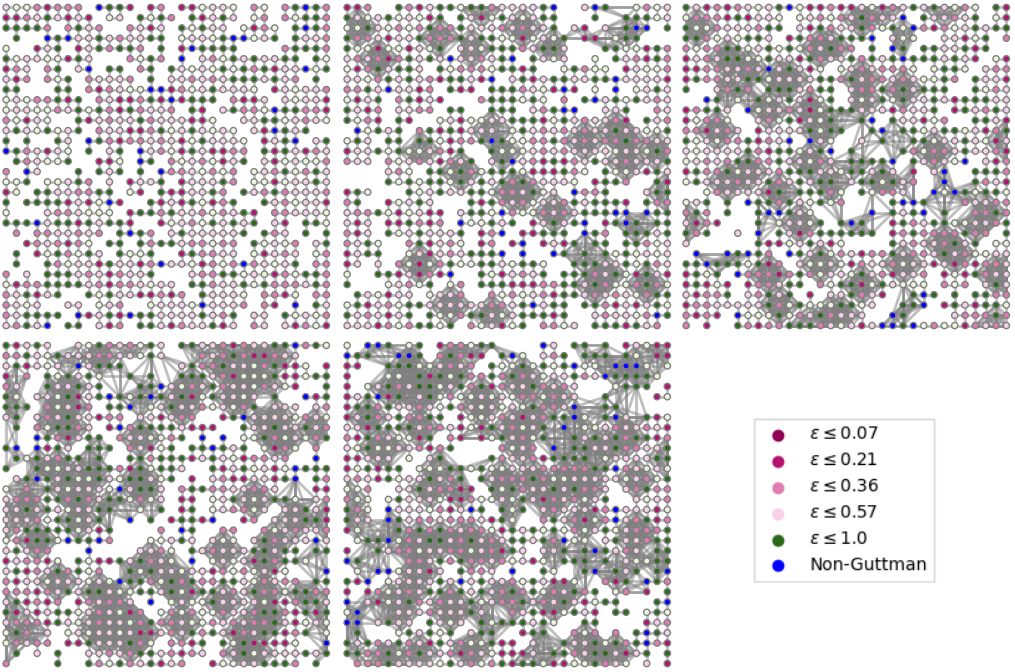Behavioral and Topological Heterogeneities in Network Models of Segregation

(As presented at NetSci 2023 Vienna)
Abstract
Agent-based network models of residential segregation have been of persistent interest to various research communities since their origins with James Sakoda and Thomas Schelling. Frequently, these models have sought to elucidate the extent to which the collective dynamics of individual preferences may cause segregation to emerge. This open question has sustained relevance in U.S. jurisprudence. Previous investigation of heterogeneity of behaviors (preferences) by Xie & Zhou (2012) has shown reductions in segregation on networks. Previous investigation of heterogeneity of topologies by Gandica, Gargiulo, & Carletti (2016) has shown no significant impact on observed segregation levels when preferences are homogeneous. Recent work by Sayama and Yamanoi (2020) has shown the importance of representing realistic heterogeneities in dynamical social network models. In this work, the necessity of concurrent representation of both behavioral and topological heterogeneities in network segregation models is examined. Extending the previous works, additional network simulations were conducted using both Xie & Zhou’s and Schelling’s preference models on 2D lattices with varied levels of densification to create topological heterogeneities (i.e., clusters, hubs). Results show a richer variety of outcomes, including novel differences in resultant segregation levels and network organization. Notably, with concurrently increased representations of heterogeneous preferences and heterogeneous topologies, reduced levels of segregation emerge. Implications and areas for future study are discussed. Gandica, Y., Gargiulo, F., & Carletti, T. (2016). Chaos, Solitons, and Fractals, 90, 46-54. Sayama, H., & Yamanoi, J. (2020). NetSci-X 2020 Proceedings, pp. 171-181. Xie, Y., & Zhou, X. (2012). PNAS, 109[29], 11646-11651.